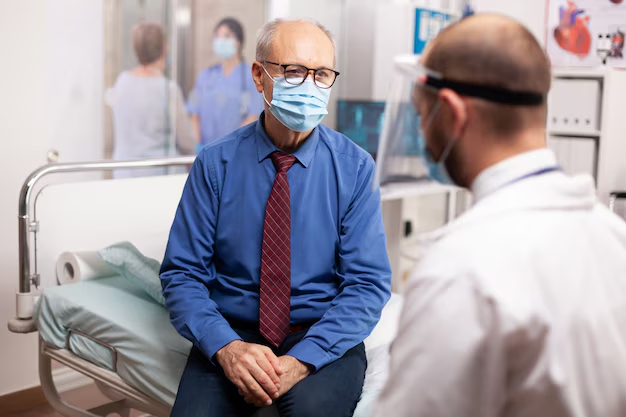Understanding Prostate Cancer: Key Insights and Symptoms to Watch For
Prostate cancer is a topic of growing concern among men worldwide, yet remains shrouded in mystery for many. With one in eight men facing a prostate cancer diagnosis in their lifetime, it's crucial to unravel the realities, symptoms, and potential impacts of this condition. Knowledge is empowerment, and by understanding the intricacies of prostate cancer, one can take informed steps for health and well-being.
What is Prostate Cancer?
Prostate cancer originates in the prostate gland, a small walnut-sized organ located below the bladder and in front of the rectum. The prostate's primary function is to produce seminal fluid, which nourishes and transports sperm.
Prostate cancer arises when the cells in the prostate grow uncontrollably. While some prostate cancers grow slowly and may need minimal or even no treatment, others can be aggressive and spread quickly. Recognizing the types and stages of prostate cancer can dramatically influence treatment decisions and outcomes.
Types of Prostate Cancer
- Adenocarcinoma: The most common type, originating in gland cells responsible for fluid production.
- Small cell carcinoma: A rarer and more aggressive type.
- Neuroendocrine tumors and transitional cell carcinoma: Other rare variations originating in different cell types.
Understanding the specific type of prostate cancer is vital as it affects treatment options and prognoses.
Recognizing the Symptoms
Prostate cancer symptoms can be subtle and often mimic other urological conditions. Early detection improves management and treatment outcomes considerably, so awareness is key.
Common Symptoms
- Difficulty urinating: A weak or interrupted urine stream and straining to empty the bladder.
- Frequent urination: Especially noticeable at night (nocturia).
- Blood in urine or semen: May appear as a red or rusty discoloration.
- Erectile dysfunction: Difficulty achieving or maintaining an erection.
- Pain: Discomfort in the pelvic area, back, or hips.
Advanced Symptoms
As prostate cancer progresses, symptoms may extend beyond the prostate:
- Bone pain: Often indicative of spread to the bones.
- Swelling in the legs: Resulting from lymph node involvement.
- Fatigue: Persistent tiredness without a clear cause.
Despite these indicators, some prostate cancers remain asymptomatic until reaching advanced stages, underscoring the importance of regular screenings.
The Importance of Screening
Prostate cancer screening can detect the disease before symptoms appear, often leading to better outcomes. Discussing personalized screening plans with a healthcare provider ensures you act proactively based on individual risk factors.
Key Screening Methods
- Prostate-specific antigen (PSA) test: Measures levels of PSA in the blood, with higher concentrations suggesting cancer or other conditions.
- Digital rectal exam (DRE): A physical exam where a doctor checks the prostate for abnormalities in texture, size, and shape.
Deciding when and how often to screen for prostate cancer involves considering age, family history, ethnicity, and overall health.
Risk Factors to Consider
Identifying risk factors can guide decisions about screening and lifestyle changes:
- Age: Risk increases significantly after age 50.
- Family history: A history of prostate cancer among close relatives elevates risk.
- Ethnicity: African American men face a higher risk of developing prostate cancer.
- Diet and lifestyle: High-fat diets and sedentary lifestyles can contribute to risk.
Being aware of these risk factors and discussing them with a doctor offers a roadmap for preventive measures and informed health care decisions.
Lifestyle and Management
While genetics play a role, lifestyle alterations can significantly impact prostate cancer risk and progression:
Diet and Nutrition
- Healthy fats: Incorporating more omega-3 fatty acids (found in fish) and reducing saturated fats may offer protective benefits.
- Fruits and vegetables: Rich in antioxidants and nutrients that support immune function and reduce cancer risk.
Physical Activity
Regular exercise, including both cardiovascular and strength training, enhances overall health and can help keep prostate cancer at bay.
Routine Health Checkups
Regular visits to a healthcare provider ensure that any signs of prostate abnormalities are promptly investigated, and routine screenings are kept up to date.
Treatment Options and Management
The management of prostate cancer hinges on the stage and type of cancer, individual health, and personal preferences. Here are some common approaches:
Active Surveillance
Used for low-risk cancers, this involves regular monitoring without immediate treatment. This strategy aims to avoid unnecessary interventions for slow-growing cancers.
Surgery and Radiation
- Radical prostatectomy: Surgical removal of the prostate.
- Radiation therapy: Using high-energy rays to target and destroy cancer cells.
Hormone Therapy
This treatment reduces or blocks the production of testosterone, which fuels prostate cancer growth. It's commonly used in advanced cases.
New Therapies and Clinical Trials
Emerging treatments, including immunotherapy and targeted drug therapies, offer hope for more effective and less invasive options.
Looking Ahead
As research develops, our understanding of prostate cancer continues to grow, bringing hope for earlier detection, better treatment options, and increased survival rates. Staying informed and working closely with healthcare providers remains crucial in the fight against prostate cancer.
🌟 Key Takeaways
- Stay Informed: Understanding prostate cancer types and risks empowers proactive health decisions.
- Recognize Symptoms: Early detection of symptoms leads to better management.
- Routine Screening: Regular PSA and DRE tests are vital for early intervention.
- Lifestyle Matters: Healthy diets and exercise can reduce risk.
- Discuss Risk Factors: Family history and ethnicity are critical in risk assessment.
By keeping these insights in focus, men can face prostate cancer with greater awareness and preparedness, contributing to improved outcomes and quality of life.

Related Articles
- Are Breast Cancer Lumps Painful
- Are Chills a Sign Of Cancer
- Are Colon Spasms a Sign Of Cancer
- Are Lytic Lesions Always Cancer
- Are Polyps Cancer
- Can a Blood Test Detect Cancer
- Can a Ct Scan Detect Cancer
- Can a Dexa Scan Show Cancer
- Can a Gastric Emptying Scan Show Cancer
- Can a Lung Biopsy Cause Cancer To Spread